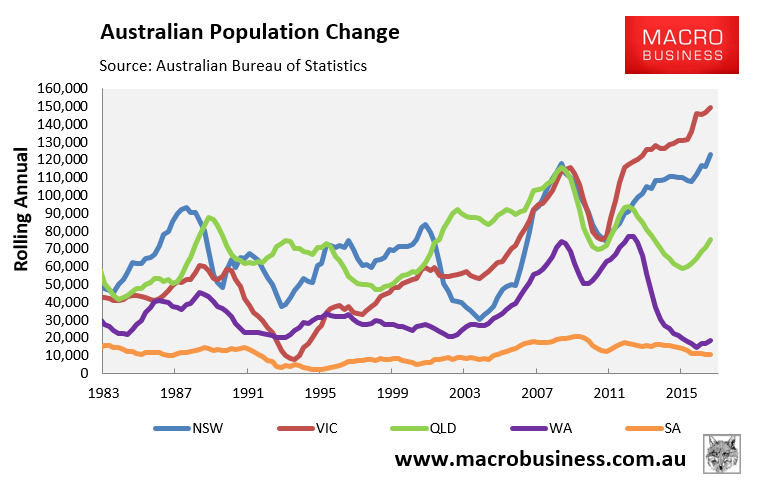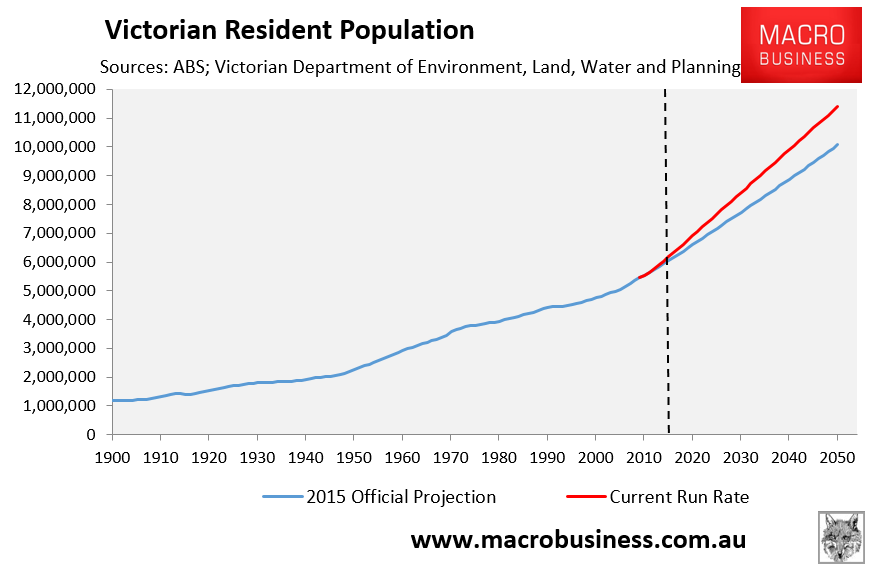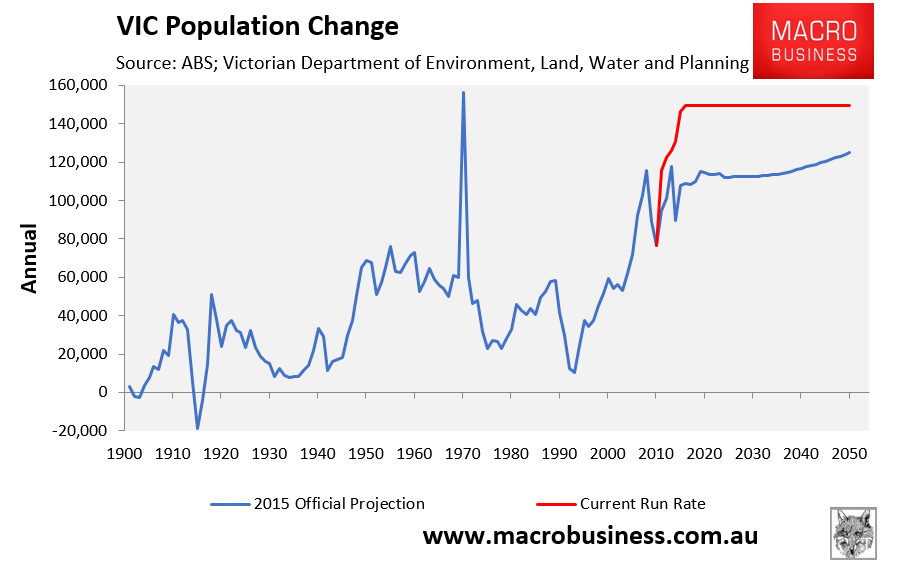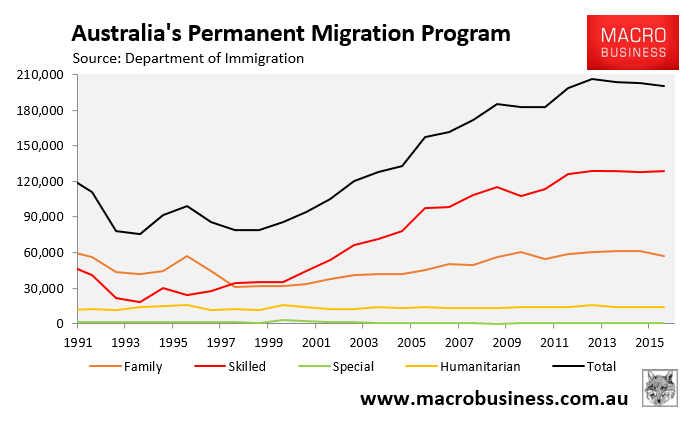Remember this chart? It shows that Victoria’s population surged by an all-time high 149,374 people in the year to March 2017:

And remember how the Liberal Opposition pledged to shift Melbourne’s population growth to Victoria’s regions in a bid to take pressure off both housing and infrastructure in Melbourne?
Well, it appears the State Opposition’s plan has already hit a major snag, with regional V/Line passenger train services experiencing overloading as population growth swells throughout the regional cities linking to Melbourne. From The ABC:
Many of Victoria’s V/Line train services are overcrowded and at capacity before they have even reached their busiest stations, just two years after a multi-billion-dollar upgrade to the state’s Regional Rail Link.
In 2015 $3.65 billion was spent on building 90 kilometres of track between West Werribee and Southern Cross station in Melbourne’s CBD to service an extra 54,000 people a day travelling from Melbourne’s booming west.
In April this year $1.45 billion was dedicated to speeding up services in the Bendigo, Ballarat and Gippsland regions, including $110 million to establish a new Surf Coast rail project to Torquay, while 151 new services were added across the state in August.
But that has not made life easier for Chris Saunders, who has been commuting from Geelong to Southern Cross for 25 years.
He said the service is not what people would expect given the amount of money that has been spent on rolling out the new fleet of trains.
“It’s uncomfortable and it’s often delayed — any cancellations, any delays have a flow-on effect throughout the day,” he said.
“Most people are unhappy and uncomfortable. It’s too cramped, too crowded.”Mr Saunders said the attraction of being able to get work done on the trains, which are designed for longer-haul travel, was no longer a reality…
“It’s just a commute and sometimes it feels a bit like a cattle truck,” he said.
V/Line statistics showed eight morning peak services on the Geelong line were at 100 per cent capacity before they had reached the busiest stations — the growth suburbs of Tarneit and Wyndham Vale on Melbourne’s fringe.
Even though there are 445 seats on the Waurn Ponds service to Melbourne that leaves at 6:48am, it is at capacity by Tarneit.
In Ballarat, three morning peak services are full before they reach Caroline Springs and Deer Park.
Many afternoon peak services are also bursting at the seams…
Stephanie Wisely has just moved from New South Wales to Victoria and catches the train from Wyndham Vale to Southern Cross.
She is surprised how crowded it is for her morning commute.
“The 7:48am [service] is always like this. We’re like fish standing up. This is my first month or so and everyday has been like this,” she said…
Remember that the Victorian Government’s own bullish forecasts of population growth have already been smashed (see red below). As shown in the next chart, Victoria’s population was in 2015 projected to hit 10 million people by 2051, with Melbourne’s population hitting 8 million people:

However, this projection assumed that annual population growth would not exceed 120,000 over the next two decades:

Victoria’s population growth in the five years to 2016 was massively revised upwards following the Census. And these upward revisions, combined with the growth of 150,000 in the year to March, have smashed the Victorian Government’s own bullish assumptions.
If the current population growth persists, Melbourne and Victoria are headed for populations of roughly 9 million and 11.4 million respectively by 2051, representing growth of some 90% over 2016 levels.
Packed metro trains and trams. Packed regional trains. Packed roads. Packed inner city schools. Packed hospitals. Unaffordable housing. Seriously, where is the benefit for incumbent residents from running a mass immigration ‘Big Australia’ program?
The federal government must slash Australia’s permanent migrant intake – the driver of Australia’s world-beating population growth – from 200,000 currently to the historical average of around 70,000:

Our living standards depend on it.

